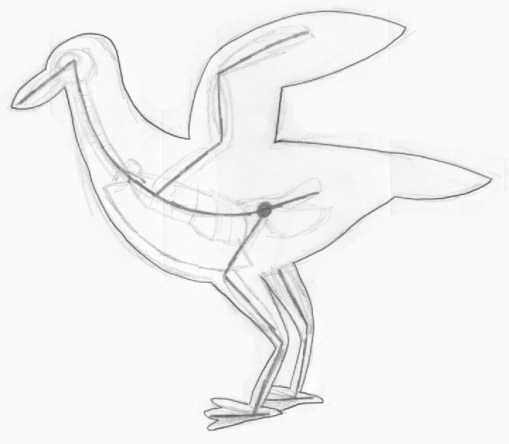While working on my bird animation, I had a brief look into what industries I could use the skills learned during this project to get a job and what types of industries use 3D animations of birds and why.
The obvious choice is the animation industry itself, countless animated films and cartoons feature animals as starring characters or as background characters to make a scene look more alive or realistic. One example of an animation that uses birds extensively is For the Birds, a short film produced by Pixar in 2000.
 An image from For the Birds (2000). A short clip of the film can be seen here
An image from For the Birds (2000). A short clip of the film can be seen here
For the Birds is a short animation about a group of birds sitting on a telephone wire as a larger bird appears and begins to annoy them. While the film is very much animated in a cartoon style, it is still somewhat based in reality. While the birds move about in an exaggerated humorous way, they still move similarly to how real birds would move.
![]() An image of one of the flying creatures featured in Avatar (2009)
An image of one of the flying creatures featured in Avatar (2009)
3D animation also plays a large part in the special effects industry. If it isn’t possible for an animal to perform how you want it to in a live action film (Or if it is a made up creature entirely) you can use 3D animation to create a CG creature to be in the scene along with human characters. For example, both the Lord of Rings series and Avatar feature flying creatures similar to dragons. Since these creatures don’t exist in the real world, they were created through 3D animation and it is more likely than not that birds were used as inspiration, if not reference, for how they should move. While the films are based in fantasy and science fiction, the creatures move about how you would expect them to move about if they really existed, so my work on realistic bird animation could be used as a starting point for similar industry work to these.
An example of a TV advertisement for The Famous Grouse
While the previous industries are both routed in entertainment, animations of birds could also be used in the advertisement industry. The Famous Grouse is a brand of whisky that uses a red grouse as its mascot and the character is featured heavily in their advertising. The bird in these adverts moves really similar to how a real bird moves and, unlike the previous examples used, the character also looks like a realistic bird. My work on bird animation for this project could easily be adapted to work in the advertising industry since my project was a 30 second long video and that is a similar length to an average TV advertisement.
Another non-entertainment based industry my type of animation could be used in is education. Walking with Dinosaurs was a documentary series produced by the BBC in 1999. Its purpose was to educate about various dinosaurs and how they lived through the use of computer graphics and animatronics. One episode of the series in particular was about a flying dinosaur called the Ornithocheirus. In order to recreate how a dinosaur moves, you need to study the bone structure of the dinosaur and see if it compares to current animals. Flying dinosaurs are similar in form to birds, so studying them can give an insight into how they might have moved. Throughout this project I have spent a great deal of time studying how birds move, so if I were to continue with this work I could perhaps adapt my work for documentaries like Walking with Dinosaurs or other educational videos like those that are used in schools.





